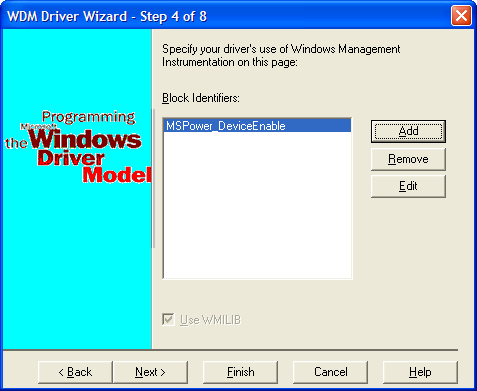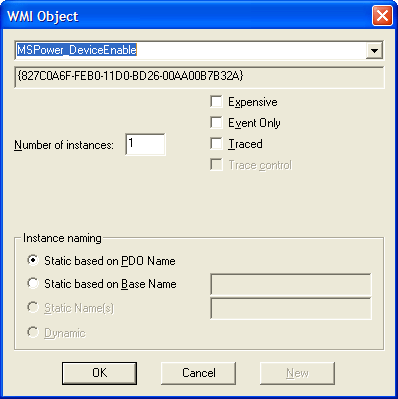WMI Support
WMI Support
If you ve specified that you want to handle IRP_MJ_SYSTEM_CONTROL requests, the wizard will present the page shown in Figure B-8 to allow you to specify the elements of your custom Windows Management Instrumentation (WMI) schema or to specify any Microsoft-standard classes you will support.

Figure B-8. Page for specifying WMI options.
The Block Identifiers list names the class globally unique identifiers (GUIDs) in the order they ll appear in the GUID list for WMILIB.
Figure B-9 illustrates how you can describe one of the standard Micrsoft classes. The topmost (unlabeled) control is the symbolic name of the GUID. By typing in a name, you can specify a class in your custom schema. You can specify the following attributes of a WMI class:
- Number Of Instances
Indicates how many instances of the class your driver will create.
- Expensive
Indicates an expensive class that must be specifically enabled.
- Event Only
Indicates that the class is used only to fire an event.
- Traced
Corresponds to a WMI option that I don t currently understand. But if I ever do understand it, I ll be able to use this check box to influence its state.
You can choose between physical device object (PDO)-based instance naming and instance naming using a base name. Microsoft recommends you use PDO-based naming.

Figure B-9. Dialog box for specifying a WMI class.
EAN: 2147483647
Pages: 119